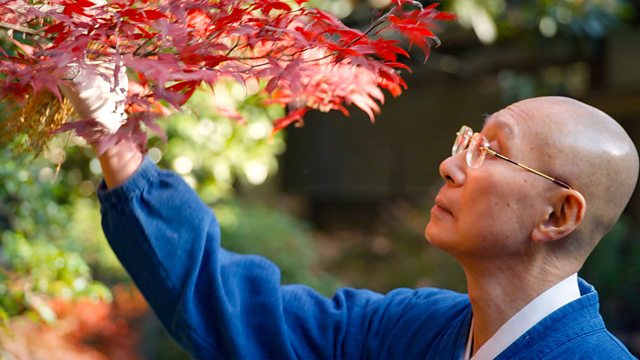Nature and Us – A History through Art episode 2: James Fox uses art to explore how humans began to try to understand nature for the very first time. From the Song dynasty in China and the Islamic world, through to the Scientific Revolution and the advent of the industrial era, James shows the very different ways in which humans came to both appreciate and understand nature, whilst at the very same time beginning to dominate and control it.
With the advent of landscape painting in medieval China, James discovers that these artworks reflect an attitude of harmony and balance with nature that came from a philosophical belief system known as Daoism. We then meet a Zen Buddhist monk Shunmyo Masuno, who is also an internationally renowned garden designer, and learn that Zen gardens are the means to contemplate the unknowable mysteries of nature. James’s story then moves from East Asia to the cultures of the Islamic world. He examines a brightly coloured chameleon painted by Ustad Mansur in 1612 for the Mughal emperor Jahangir – a combination of artistic flair and close observation in which we see the beauty of the natural world closer than ever before.
James also explores the story of one of the first European botanical artists, an extraordinary woman called Maria Sibylla Merian. Her 1705 collection of images from her travels in Suriname was a milestone in natural history. We encounter Nirupa Rao, a contemporary Indian botanical artist who is breathing new life into this traditional art form, working in the jungles of the Western Ghats. From the analytical to the romantic, James’s story then moves to the wild and awesome paintings of JMW Turner, before exploring the advent of landscape photography in the American west. The photography of Carleton Watkins played a part in creating the first protected landscape in the world – Yosemite National Park.
James reveals the many ways in which art illuminates the extraordinary changes that took place in this millennia-long period. From an East Asian acceptance of the unknowability of nature to the drive to understand, classify and appreciate it, each point of view is an attempt to understand our place in nature.
Nature and Us – A History through Art episode 2
Maria Sibylla Merian
Maria Sibylla Merian was a German-born naturalist and scientific illustrator. She was one of the earliest European naturalists to observe insects directly. Merian was a descendant of the Frankfurt branch of the Swiss Merian family.
Merian received her artistic training from her stepfather, Jacob Marrel, a student of the still life painter Georg Flegel. Merian published her first book of natural illustrations in 1675. She had started to collect insects as an adolescent. At age 13, she raised silkworms. In 1679, Merian published the first volume of a two-volume series on caterpillars; the second volume followed in 1683. Each volume contained 50 plates that she engraved and etched. Merian documented evidence on the process of metamorphosis and the plant hosts of 186 European insect species. Along with the illustrations Merian included descriptions of their life cycles.
In 1699, Merian traveled to Dutch Surinam to study and record the tropical insects native to the region. In 1705, she published Metamorphosis insectorum Surinamensium. Merian’s Metamorphosis has been credited with influencing a range of naturalist illustrators. Because of her careful observations and documentation of the metamorphosis of the butterfly, Merian is considered to be among the more significant contributors to the field of entomology by David Attenborough. She discovered many new facts about insect life through her studies.




